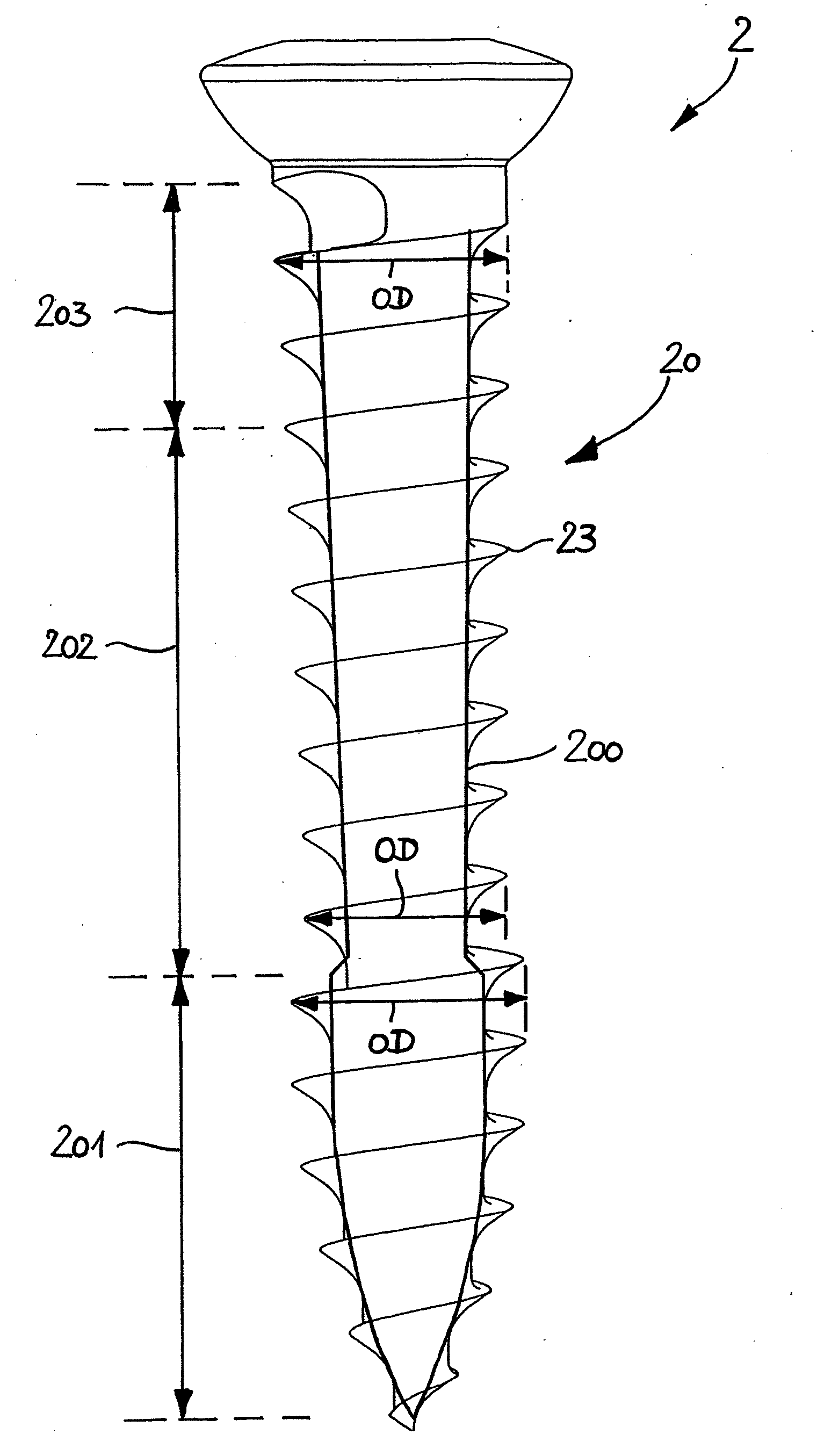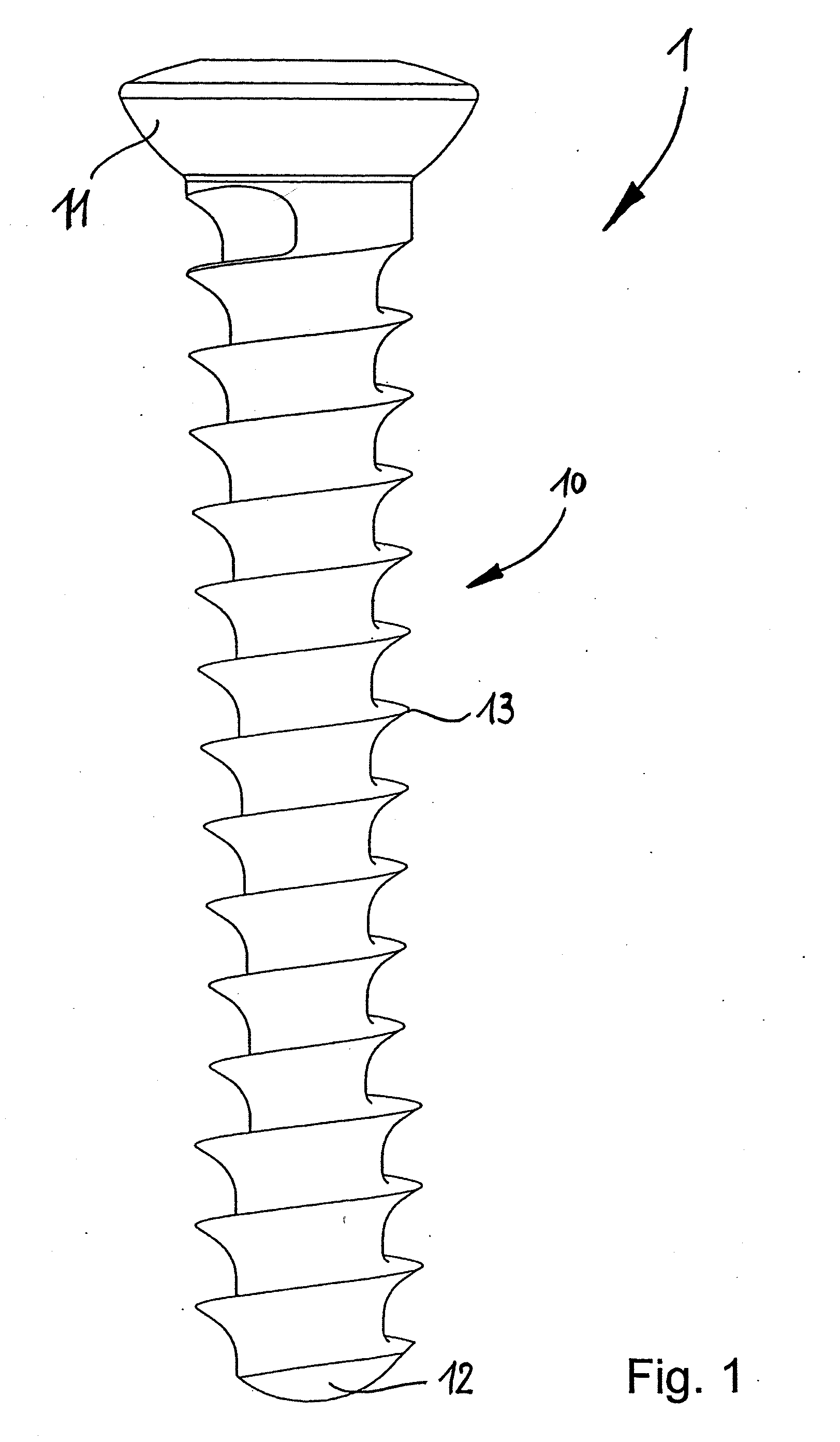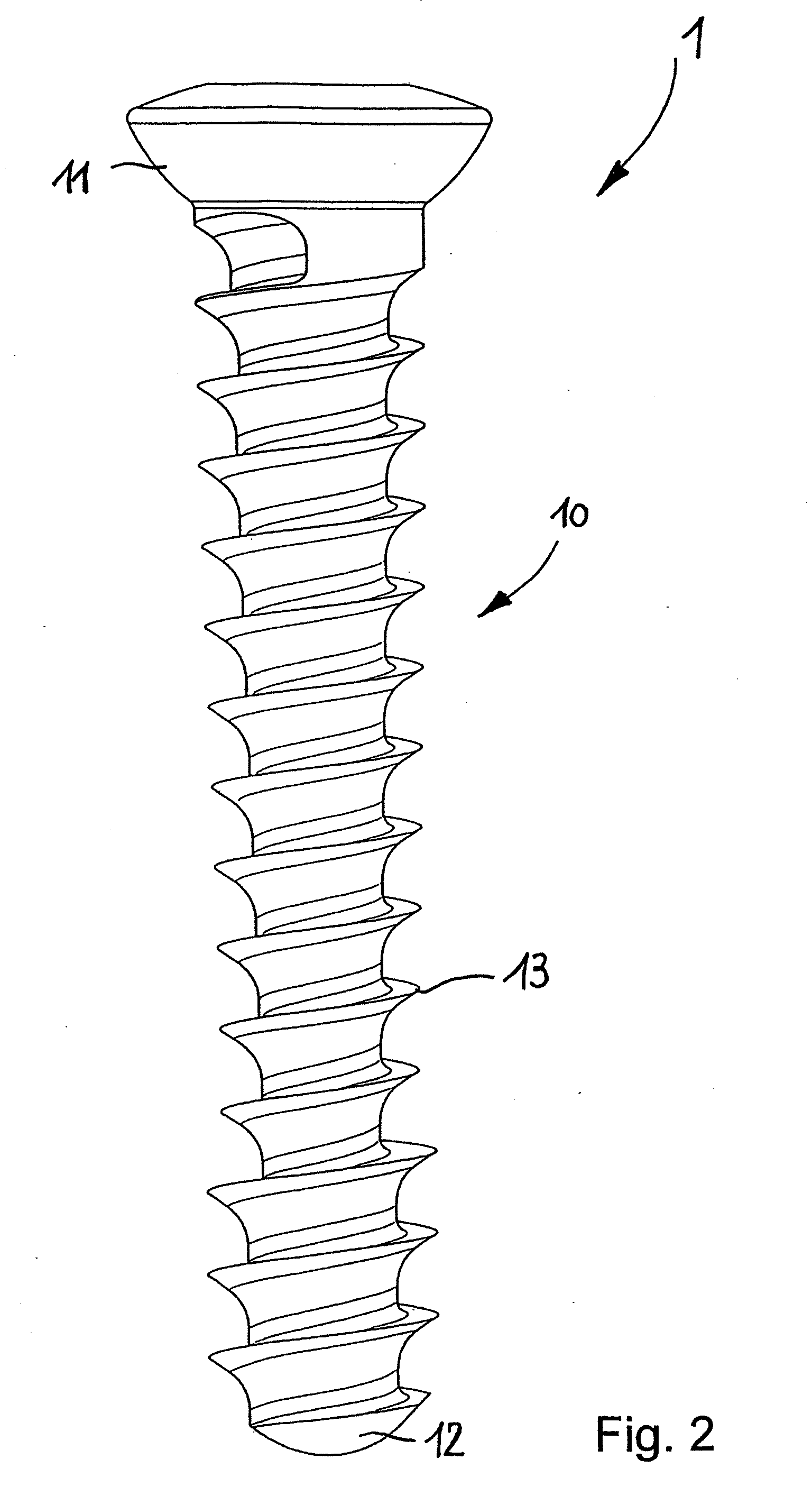Thread-Forming Screw
a technology of threads and screws, applied in the field of threads, can solve the problems of increased torque, and difficulty, and achieve the effects of preventing slipping of the screw, easy screwing, and convenient positioning
- Summary
- Abstract
- Description
- Claims
- Application Information
AI Technical Summary
Benefits of technology
Problems solved by technology
Method used
Image
Examples
Embodiment Construction
[0039]A first exemplary embodiment of the screw according to the invention is explained below with reference to FIGS. 1 to 5. FIG. 1 shows a view of the first exemplary embodiment of the screw 1 according to the invention, here a bone screw. The screw 1 comprises a shank 10 and a thread-free spherical head 11, which, for example, enables it to be accommodated in a countersunk plate hole of a bone plate (not shown). The screw end 12 is of blunt design; the screw 1 shown in FIG. 1 is therefore a self-tapping (not self-drilling) screw. FIG. 2 shows the same screw as FIG. 1, but with some additional auxiliary lines, thereby providing a better three-dimensional impression of the screw 1.
[0040]The envelope over the thread 13 of the screw, which is designed here as a continuous thread of constant pitch, can be imagined with reference to FIG. 3, although in FIG. 3 only the core 100 of the shank 10 is shown, in exaggerated representation. However, since the thread 13 has a constant radial th...
PUM
 Login to View More
Login to View More Abstract
Description
Claims
Application Information
 Login to View More
Login to View More - R&D
- Intellectual Property
- Life Sciences
- Materials
- Tech Scout
- Unparalleled Data Quality
- Higher Quality Content
- 60% Fewer Hallucinations
Browse by: Latest US Patents, China's latest patents, Technical Efficacy Thesaurus, Application Domain, Technology Topic, Popular Technical Reports.
© 2025 PatSnap. All rights reserved.Legal|Privacy policy|Modern Slavery Act Transparency Statement|Sitemap|About US| Contact US: help@patsnap.com



